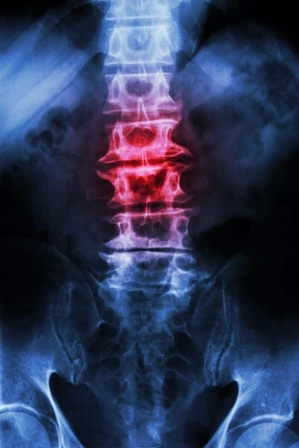Expand I63.- to Correctly Code a Cerebrovascular Accident Diagnosis
Discover which subcategory of codes report stroke sequela. When a patient suffers a stroke, providers have many imaging options available to diagnose the patient’s condition and evaluate the possibility of further risk. When the report arrives on your desk, you’ll need to know which codes to assign based on the tests performed, diagnoses determined, and any sequela documented. Read on to recognize the codes you’ll need to report stroke cases. Identify the Signs of a Stroke A cerebrovascular accident (CVA), also known as a stroke or cerebral infarction, occurs when the patient experiences a disruption in the blood flow to the brain. When the blood flow is interrupted, the brain cells don’t receive the nutrients and oxygen needed from blood and begin to die within a short amount of time. Common signs that a patient has experienced a stroke include: Know Which Imaging Tests Help Diagnose CVA When the patient presents to the hospital to receive care for a possible stroke, healthcare professionals have several imaging modalities at their disposal to detect and diagnose the condition. The imaging options available for diagnosing a CVA include, but are not limited to: Each imaging modality has their own benefits. For example, NCCT scans, are ideal for imaging immediately after the provider has stabilized the patient. NCCT is used to help exclude hemorrhagic stroke and can identify calcification, which makes it possible to detect lesions. You’d report an NCCT scan with 70450 (Computed tomography, head or brain; without contrast material). A provider may perform a duplex ultrasound to screen for carotid artery stenosis if the patient is suspected to have experienced a stroke. You’d assign 93880 (Duplex scan of extracranial arteries; complete bilateral study) to report a duplex ultrasound scan of the patient’s vessels surrounding the brain. Physicians can also choose from nuclear medicine modalities, such as PET and SPECT scans. These scans can calculate the risk of carotid plaque for rupture. You’d select codes from 78608-78609 (Brain imaging, positron emission tomography (PET) …) to report a PET scan to diagnose a CVA. If the provider uses a SPECT scan to evaluate the patient, then you’d assign 78803 (Radiopharmaceutical localization of tumor, inflammatory process or distribution of radiopharmaceutical agent(s) (includes vascular flow and blood pool imaging, when performed); tomographic (SPECT), single area (eg, head, neck, chest, pelvis), single day imaging). Find the Correct Code in the ICD-10 Book If you receive a report that states the provider diagnosed the patient with a stroke or CVA, the ICD-10-CM code set has several code options available in the I63.- (Cerebral infarction) code category. The following code subcategories allow you to assign an appropriate code for a CVA diagnosis where the physician identifies the cause of the stroke: Except for I63.6, each code subcategory listed above can be further expanded to a 5th and sometimes 6th character to complete the codes. You’ll use a 6th character in the I63.0- to I63.5- code subcategories to specify the circulatory structure affected and laterality. If the provider documents a stroke or CVA without any additional information, you’ll assign the default code of I63.9 (Cerebral infarction, unspecified). This code features an additional synonym of “Stroke NOS,” which stands for not otherwise specified and lines up with the provider’s diagnosis. Pay Attention to the Parent Code Notes The I63.- code category features two notes instructing you to use additional codes if certain criteria are met. One note directs you to use Z92.82 (Status post administration of tPA (rtPA) in a different facility within the last 24 hours prior to admission to current facility) to identify that the patient was administered tissue plasminogen activator (tPA) or recombinant tissue plasminogen activator (rtPA) at a different facility before being admitted to the current facility. “tPA is used quickly after stroke onset to help restore blood flow to brain regions by dissolving blood clots blocking blood flow. rtPA has been considered the standard of care for treatment of acute ischemic stroke,” says Kristen Taylor, CPC, CHC, CHIAP, associate partner of Pinnacle Enterprise Risk Consulting Services. According to Z92.82’s descriptor, the tPA or rtPA administration must have occurred within the previous 24 hours in a different facility for you to accurately report the code. The other Use additional code note instructs you to assign the appropriate National Institutes of Health Stroke Scale (NIHSS) score from the R29.7- (National Institutes of Health Stroke Scale (NIHSS) score) subcategory. When Do You Report Late-Term Effects? Patients who have experienced a stroke or CVA may also experience late-term effects, or sequela, after the initial incident. “Sequelae are residual effects or conditions produced after the acute phase of an illness or injury has ended,” says Grabiela Juarez, COC, CPC, CPMA, Approved Instructor, revenue cycle specialist of Sceptre Management and owner of Medical Coding Vida Academy in Salt Lake City, Utah. Residual effects may be apparent soon after the illness or injury, or the sequela may occur months or years later. “Therefore, there is no time limit on when a sequela code can be assigned,” Juarez adds. You’ll use the I69.3- (Sequelae of cerebrovascular disease) subcategory to report any sequela related to a cerebral infarction, CVA, or stroke.





